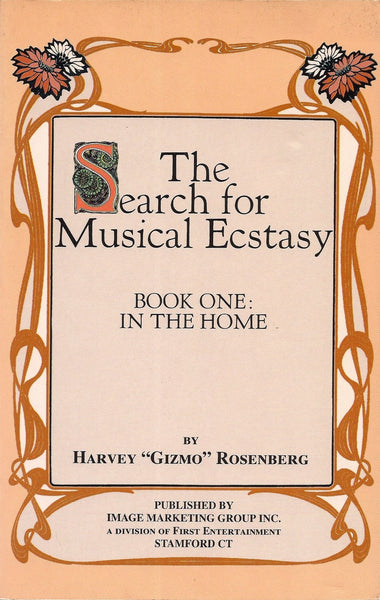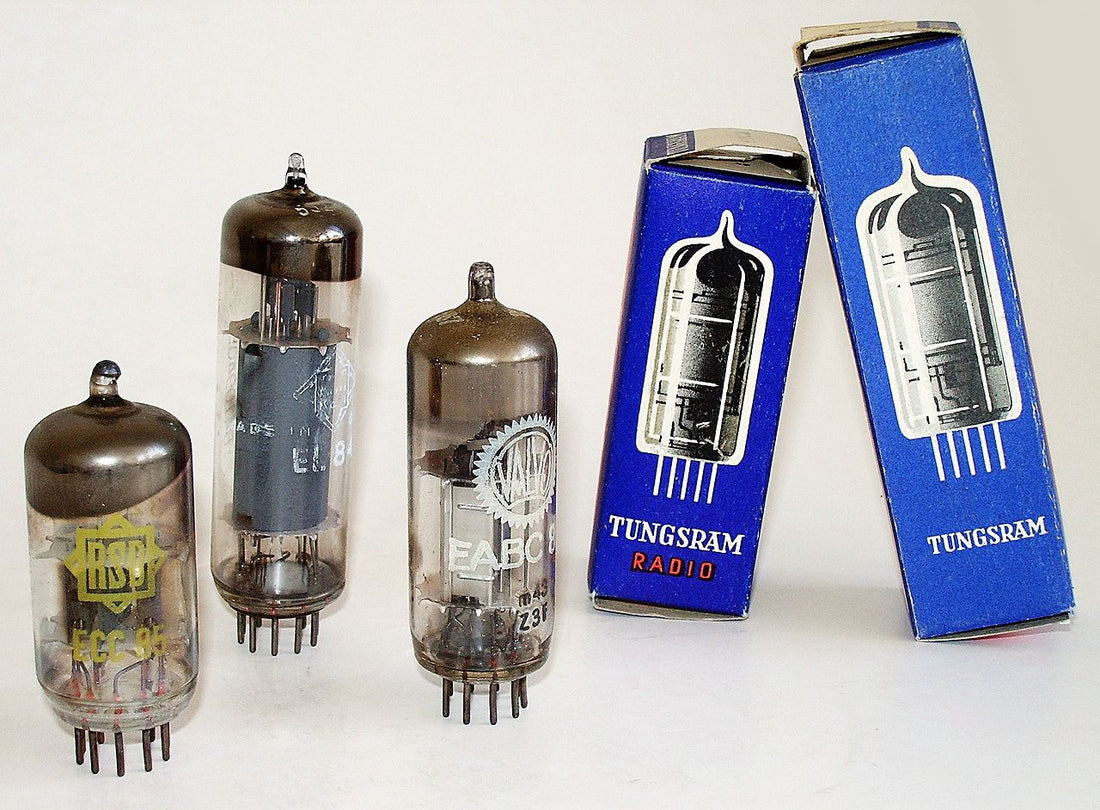Many of us know that the sound of our stereo changes from day to day or even hour to hour. Very often the better (or more sensitive, or finicky) the system, the more the sound can change over time. You know how it goes – one day your system sounds like magic, everything comes together and the performers on the record sound so present and tangible it’s spooky. Other days, the system is flat, lifeless and un-involving. And you didn’t change a thing. Why?
I’ve seen some discussions about this over the years, but I wanted to gather some of my own thoughts, experiences and speculations. Some of this might sound provocative – OK, crazy and completely unscientific – but I’m interested in your reactions.
As I see it there are three factors involved: the equipment, the listener, and the unknown.
A Change Is Gonna Come
If there is a change to the equipment, the sound can change – pretty obvious. I’ll bet the first thing to come to mind is the quality of the AC power feeding your gear. I live on Long Island, and the power is inconsistent and “noisy” and the voltage fluctuates. Truth: in the summer, the fluorescent lights in my basement actually take longer to turn on than in the winter. Explain that, PSEG!
Audio components, like any other consumer products, are built to a price. (Yes, there are exceptions.) Sometimes compromises are made in the power supply or other design aspects, making a given piece of audio gear more susceptible to the vagaries of the AC coming out of the wall as well as to our twin nemeses, EMI (electromagnetic interference) and RFI (radio frequency interference). At a New York Stereophile show in the 1990s, designer John Bicht did a demonstration where he held a meter up in the middle of the room. The meter showed how much stray interference was in the air – at one spot, around 12 volts. And that was in the 1990s. How much is present in today’s Wi-Fi-fueled world?
No wonder systems can sound better at night, because there’s less crap on the power lines and in the air. As an aside, light dimmers are notorious noise sources. If you have a dimmer in your listening room, try turning it off.
Changes in temperature, humidity and barometric pressure are obvious environmental variables. After all, when we listen, we’re hearing vibrations propagating as acoustic waves through air (unless we’re underwater eavesdropping on dolphins). Air is elastic and its density changes, and if the medium of propagation changes, small wonder the sound can also.
Speaking of elastic, I’ve heard phono cartridges sound different at different temperatures. Harry Pearson of The Absolute Sound attributed this to changes in the elasticity of the cartridge suspension and did not want the cartridge to get too cold, which could result in a “harder” sound. To this end, he had a Tensor lamp shining on the cartridge, the presence of which resulted in an unfortunate audio incident one time. Also, I feel that some cartridges can take time to “warm up” to sound their best, around the duration of a record side. And as most of us know, typically the entire system needs to warm up to achieve optimum performance (mine takes about an hour).
Paper loudspeaker cones are absorbent and their behavior can change according to the humidity. Some speaker designers have avoided the use of paper to eliminate this variable. Perhaps a more esoteric consideration: what about the effect of humidity on speaker enclosures? After all, the tops of acoustic guitars can expand and swell in more humid conditions. Would a change in speaker cabinet dimensions, however minute, affect their sound? Is this idea ridiculous? I don’t know.
Degradation in the performance of one’s audio system over time can be insidious. When I owned an Audio Research SP-11 preamp I once asked Terry Dorn (one-time company president) when I should change tubes. “When the magic is gone” was his immediate response. OK, how do you quantify that? But I knew when it was time. If you’re a tube aficionado and not sure, re-tubing may work wonders. Of course, some people simply will not own tubed components, to eliminate such uncertainty. That said, at some point one must face the hard truth that electronic components do change, drift and even deteriorate over time (vintage guitar amplifiers need to have their power supply capacitors replaced as a matter of course), and this will change the sound.
Then there’s system maintenance. According to Received Audiophile Wisdom, one must clean the connections at regular intervals, and checking the turntable, tightening the speaker-driver screws and giving everything a cleaning ain’t bad ideas either. (I confess – I forget to do this, even though such maintenance can spruce up my system’s performance.) On the Steve Hoffman forum, one participant opined that after cleaning his listening room (I forget to do that also), the system sounded better. Which leads us to a gratuitously obvious segue into the next section…
We the Listeners
We as listeners are infinitely more variable than any audio system, which gives rise to all kinds of changes in our perceptions of said systems. A couple of extreme examples: if, like me, you’re allergic to pollen, your system will not sound as good during a high-pollen-count day. If you have a cold, stuffy nose or sinus headache, forget it. Your system will sound as blocked as your nasal passages.
Much has been made of making sure your ears are clean. I don’t think this is something to obsess over, but if you do feel like your ears are plugged, get them checked out.
If I’m in a good mood, my system sounds better. If I’m stressed or distracted over something, I’m not going to be paying attention to the sound as much and I won’t “hear it” as well. Thankfully, the very act of turning on my system and getting ready to listen tends to put me in a good mood. After all, the love of music and great-sounding gear is what got all of us into this!
Getting in the mood for listening is really important. It was really, really, really important to the late Harvey “Gizmo” Rosenberg, audio designer, manufacturer and philosopher. If you can, get a copy of his 1993 book, The Search for Musical Ecstasy, Book One: In the Home. It’s a hard to find but fascinating and often outrageous read. In the book Rosenberg describes his pre-listening ritual, which among other things involves a hot bath by candlelight, a massage, donning a silk kimono, and enjoying a Havana cigar, champagne, and Ben and Jerry’s frozen yogurt. While most of us might not go to such extremes – or might! – he had the right idea.

Many of us do enjoy a glass of wine, beer or relaxant of choice while listening and enjoy a good meal beforehand. The great “Prof” Keith O. Johnson, technical director at Reference Recordings, once told me that with every drink of alcohol you lose 1 dB of high-frequency hearing. That’s certainly one way to mellow out a system, as well as the listener.
“Unknown, Captain.”
Physicists don’t know everything about the nature of reality. What are dark matter and dark energy, anyway, and why isn’t there a definitive Theory of Everything yet? In light of that, I believe those of us in the audio world are also far from knowing everything about something as prosaic as why the sound of an audio system can change from day to day.
What about biorhythms, the idea that we’re affected by three different physical, emotional and intellectual cycles that overlap at different periods? Maybe there’s a “sweet spot” where they all converge and that’s when your hearing and receptiveness to reproduced sound is at its best. Sorry, I don’t believe that, but it leads me to think that maybe there are biological and mental rhythms that apply that we just aren’t aware of yet.
A contributor to an Audioholics forum speculated that changes to a system’s sound could be the result of interacting with Schumann resonances, which according to Wikipedia are “a set of spectrum peaks in the extremely low frequency (ELF) portion of the Earth’s electromagnetic field spectrum.” The forum member might have been facetious, but it does bring up the bigger question of the possibility of unseen forces or phenomena affecting us that we just haven’t discovered. Ray Bradbury took this idea to a science-fiction extreme in his superb short story, “Dark They Were, and Golden-Eyed.”
Then there’s a corollary of Murphy’s Law: the more important the demo, the more likely that something will go wrong with your system. This happened a lot at The Absolute Sound and I’ve seen it occur at audio shows too many times for me to think that the effect resides only in my imagination.
I’ll leave you with the biocentric universe concept. This theory speculates that life is not a byproduct of the universe, but is the creator of it. Among other things the theory involves quantum physics, the idea that time doesn’t exist independently of the life that is aware of it, and that everything we perceive is constructed and reconstructed in our minds.
Well, if that’s true, is it any wonder that our audio systems sound different on different days?
As Karellen said in Arthur C. Clarke’s Childhood’s End: I must think about this further.




